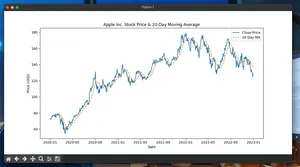Overview
Automate boring data updates, reporting, and simple ETL by editing Google Sheets from Python. This guide shows a concise, practical flow using gspread (a thin wrapper over the Google Sheets API) and the official client for advanced batch writes.
What you’ll learn:
- Authenticate with a service account
- Read ranges and write cells
- Append rows reliably
- Batch update values efficiently
Requirements
- Python 3.8+
- A Google account and a Google Sheet you can edit
- Basic terminal usage
Quickstart
- Create a Google Cloud project and enable “Google Sheets API”.
- Create a Service Account and generate a JSON key.
- Share your target spreadsheet with the service account’s email (Editor).
- Install packages:
pip install gspread google-auth google-api-python-client
- Set environment variables:
# Absolute path to the downloaded service account JSON
export GOOGLE_APPLICATION_CREDENTIALS=/abs/path/service_account.json
# The spreadsheet ID (string between /d/ and /edit in the sheet URL)
export SHEET_ID=your_spreadsheet_id
- Run the minimal working example below.
Minimal Working Example (gspread)
This script writes a header, appends a row, then reads it back.
import os
import gspread
from google.oauth2.service_account import Credentials
# Scopes: spreadsheets read/write
SCOPE = ["https://www.googleapis.com/auth/spreadsheets"]
creds_path = os.environ["GOOGLE_APPLICATION_CREDENTIALS"]
spreadsheet_id = os.environ["SHEET_ID"]
creds = Credentials.from_service_account_file(creds_path, scopes=SCOPE)
client = gspread.authorize(creds)
# Open the spreadsheet and select the first worksheet
sh = client.open_by_key(spreadsheet_id)
ws = sh.sheet1 # or sh.worksheet("Sheet1")
# Write a header row (A1:B1) in one call
ws.update("A1:B1", [["Timestamp", "Value"]])
# Append a row; USER_ENTERED lets formulas and types be interpreted
ws.append_row(["=NOW()", 42], value_input_option="USER_ENTERED")
# Read a small range back into Python (list of lists)
rows = ws.get("A1:B5")
for r in rows:
print(r)
Expected behavior:
- A header is set in A1:B1.
- A timestamp and value are appended in the next row.
- The script prints the first few rows in A and B.
Setup Steps (detailed)
- In your Google Cloud project, enable the Google Sheets API.
- Create a Service Account and download its JSON key.
- In Google Sheets, share the spreadsheet with the service account email (Editor role).
- Install Python packages with pip.
- Set environment variables for the credentials path and spreadsheet ID.
- Run the example; verify new data appears in the sheet.
Common Tasks (snippets)
- Update a rectangular range in one request:
ws.update("A2:C4", [[1, 2, 3], [4, 5, 6], [7, 8, 9]])
- Read all values (avoid for very large sheets; prefer precise ranges):
all_values = ws.get_all_values()
- Find a cell and update it:
cell = ws.find("Value") # first match
ws.update_cell(cell.row, cell.col + 1, "updated")
- Create a new worksheet if missing:
try:
ws = sh.worksheet("Data")
except gspread.WorksheetNotFound:
ws = sh.add_worksheet(title="Data", rows=1000, cols=26)
- Append multiple rows efficiently (build a block and update once):
rows_to_add = [["=NOW()", i] for i in range(10)]
start_row = ws.row_count + 1 # current size; may not reflect used range
# Prefer calculating the next empty row by scanning a column:
next_row = len(list(filter(None, ws.col_values(1)))) + 1
end_row = next_row + len(rows_to_add) - 1
ws.update(f"A{next_row}:B{end_row}", rows_to_add, value_input_option="USER_ENTERED")
Advanced: Batch Value Updates with the Official Client
For many ranges at once, call the Sheets API directly.
from googleapiclient.discovery import build
service = build("sheets", "v4", credentials=creds)
body = {
"valueInputOption": "USER_ENTERED",
"data": [
{
"range": "Sheet1!C1:D2",
"majorDimension": "ROWS",
"values": [["Sum", "=SUM(B:B)"], ["Note", "ok"]],
},
{
"range": "Sheet1!F1:F3",
"values": [["A"], ["B"], ["C"]],
},
],
}
service.spreadsheets().values().batchUpdate(
spreadsheetId=spreadsheet_id, body=body
).execute()
Choosing an Auth Method
| Method | Use when | Notes |
|---|---|---|
| Service Account | Automation, CI, servers | Share the sheet with the service account email. No interactive prompts. |
| OAuth user flow | Desktop apps, personal use | Grants access to your user Drive; use google-auth-oauthlib InstalledAppFlow. |
Pitfalls and How to Avoid Them
- Permission errors (403): share the sheet with the service account’s email, not your personal email.
- Wrong scope: include the spreadsheets scope for read/write; otherwise updates fail.
- Formula handling: use value_input_option="USER_ENTERED" so formulas like =NOW() compute.
- Worksheet naming: ranges like Sheet 1!A1 need quoting if using the raw API; with gspread, use worksheet objects to avoid A1 quoting issues.
- Row detection: row_count is worksheet size, not the last used row. To find the next data row, scan a key column.
- Large reads: get_all_values can be slow; prefer precise ranges or batch reads.
- Concurrency: concurrent writers may overwrite cells; coordinate via row-level appends or separate sheets.
Performance Notes
- Prefer rectangular range updates (ws.update with a 2D list) instead of many single-cell updates.
- Batch multiple ranges with spreadsheets().values().batchUpdate to reduce HTTP calls.
- Read only what you need: narrow A1 ranges or batchGet multiple ranges.
- Backoff and retry on 429/5xx; exponential backoff improves reliability under quota pressure.
- Precompute data in Python, then send one write. Avoid read-modify-write loops for every cell.
- Use USER_ENTERED for type inference and formulas; use RAW for exact values to avoid parsing overhead.
Tiny FAQ
- How do I authenticate without a service account?
- Use OAuth with google-auth-oauthlib’s InstalledAppFlow to obtain user credentials and store a token for subsequent runs.
- How do I insert rows at a specific position?
- With gspread: ws.insert_row(["a", "b"], index=2) to shift existing rows down.
- Can I edit a protected range?
- Only if your account (or service account) has permission to edit that protected range.
- How do I get the spreadsheet ID?
- It’s the long ID between /d/ and /edit in the spreadsheet URL.
Wrap-up
With gspread for simplicity and the official client for batch operations, you can reliably script Google Sheets edits from Python—ideal for scheduled reports, small ETL jobs, and automating everyday tasks.





